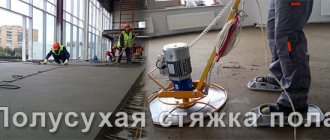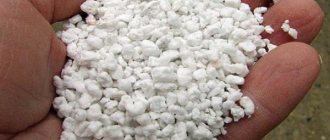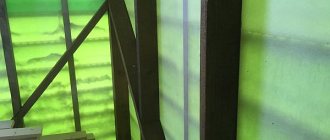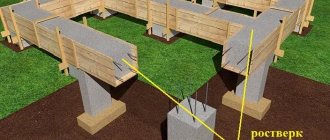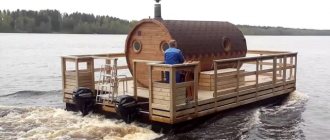Foam glass is a durable, strong and popular material for insulation. It is easy to install and highly efficient. The technology was invented almost a century ago in the USSR, and practical application was invented later in Canada. Foam glass appeared on the building materials market recently, when its production technology made it possible to make it affordable and of high quality. Before use, it is worth considering what granules or foam glass slabs are, their main advantages and disadvantages, as well as methods of use for insulation.
Description and types of foam glass
Foam glass combines the advantages of two materials at once. It combines silicate glass, which is durable and brittle, and foam, an incredibly light material. The production of foam glass involves heating a silicate mass with the addition of a substance that forms a gas. High temperature leads to the melting of the substance, as well as the formation of small bubbles. This technology allows us to obtain a lightweight and durable material that has a high heat resistance.
In the field of thermal insulation, two main types are used:
- Slab foam glass. The insulation is in the form of a plate, which has a structure with closed cells. Ideal for insulating basements, facades, ceilings, floors and foundations. The thickness is 6-12 cm, and the size of the plate is 45*60 cm. They can withstand even significant operating loads, do not shrink and are resistant to deformation under mechanical stress.
Slab insulation
- Granular material. It is a microporous spherical granule. It is produced in granules of various sizes from 1-5 mm to 7-20 mm. Can be used as insulation for interior walls, ceilings and floors.
Granular foam glass
The technical characteristics of the two types of material are similar, so when choosing it you should base only on the convenience and feasibility of using insulation of one form or another.
Criterias of choice
First of all, you need to choose based on the thickness of the slab. This is about 12 cm for external insulation and 6 cm for internal insulation. A smaller thickness can be chosen for insulating houses in the south and coastal areas. We should also talk about the choice of block dimensions. As a rule, blocks of standard sizes are sold, but with the help of a regular hacksaw they can be cut to smaller sizes.
Why do this? First of all, in order to solve the problem of ventilation of the structural layer of the enclosing structure. The more seams are made, the more places there will be for steam to escape and, therefore, ventilation of the rough surface of the wall.
The question arises how much this will worsen the thermal insulation properties. But the beauty is that there will be no deterioration in the thermal insulation properties.
The adhesive has protective properties similar to insulation. However, you shouldn’t get carried away with reducing the block either. A reduction of 2-4 times is sufficient. Excessively small blocks mean an even greater reduction in the strength of the insulation.
Main characteristics
According to statistics, the higher the hardness of a material, the lower its thermal insulation properties. Foam glass is one of the insulation materials that not only withstand heavy loads, but also have a low thermal conductivity.
Other material characteristics include:
- Thermal conductivity. Foam glass has a thermal conductivity of 0.04 W/m*s. If we compare it with wood, then for this material this indicator is two times lower, and for minimal wool it is higher on average by 25%. Therefore, foam glass perfectly protects against heat loss better than wood, mineral wool and many other insulation materials. High thermal insulation properties are explained by the presence of small closed cells with thin partitions in the structure.
- Strength. A square meter of insulation can withstand pressure of 40-100 tons, and the strength indicator is 0.5-1.2 MPa. This indicator does not deteriorate over time. However, the impact strength of the material is low. Foam glass can be broken under strong mechanical stress.
- Soundproofing. Foam glass can be used effectively not only for protection against heat loss, but also against extraneous noise. The material is capable of dampening sound waves with a force of 45-56 decibels.
- Temperature resistance. The insulation is able to withstand temperatures from -200 to +300 degrees, which allows it to be used even at extreme temperatures.
- Density. This indicator for the material is very low and is equal to 100-250 kg per cubic meter. And this figure is at least three times lower than the density of wood.
- Vapor permeability. Foam glass can also be used as a vapor barrier. The vapor permeability indicator is only 0.005 mg/(m*h*Pa).
- Moisture resistance. Foam glass slabs and granules can absorb no more than 2% of water from their own volume. The material not only does not absorb moisture, but also does not change its properties when interacting with it.
High moisture resistance
- Biological stability. Foam glass has a high resistance to insects, rodents and microorganisms. The insulation does not absorb water, so mold and mildew do not form in it. And the high hardness of the material protects it from insects and rodents.
- Chemical resistance. Foam glass is a chemically inert material. Therefore, when in contact with acids, alkalis, gases and oil products, foam glass does not interact. The only substance with which foam glass interacts is hydrofluoric acid.
- Ecological cleanliness. Foam glass does not burn, does not emit toxic gases and does not produce decay products. This makes the material safe for insulating residential premises.
The unique characteristics of the material are explained by the combination of the properties of silicate glass and gas microcapsules.
Price
The cost of foam glass is steep. Prices, of course, vary, as they depend on many factors, but on average you can buy blocks by paying $120–400 per cubic meter. You can purchase slabs and shells by paying $110–350, and you can get a granular version by spending $35–100 per cubic meter.
What can we say? Insulation with foam glass is a very dubious and costly undertaking, since the material has a lot of serious drawbacks, and, in addition, is incredibly expensive. But, as they say, the master is the master. Maybe it’s not for nothing that they call it the raw material of the future. To buy or not to buy? That is the question! The choice is yours, dear readers.
Warmth and comfort to your home, dear friends! See you on other blog pages!
Wisdom quote: Reading is the best teaching (A.S. Pushkin).
Main advantages
Using foam glass as insulation has a number of significant advantages. These include:
- Excellent thermal insulation characteristics. They are explained by the peculiarity of the structure of the material - small closed cells with thin partitions.
- Versatility. The material is universal, therefore it can be used for insulation of facades, roofs, foundations, communications, walls and floors. It can be used even for objects with a high fire hazard.
- Long service life. The material can last more than 100 years without loss of performance. At the same time, it tolerates high and low temperatures well, as well as their sudden changes.
- Good sound insulation properties. A 10 cm layer of insulation can even muffle the sounds of a running tractor engine behind the wall. Therefore, the material can be effectively used not only for protection against heat loss, but also against extraneous noise.
- Easy to install. An ordinary hacksaw can be used to cut slabs; the granules can simply be poured onto the prepared surfaces. The material is incredibly light, so working with it is easy.
- Safety. The material does not emit hazardous compounds, therefore it can be used in public and residential premises.
- Non-flammability. Foam glass does not burn, but only melts at very high temperatures, without releasing toxic components or smoke.
The advantages of foam glass have made it one of the most successful and high-quality materials for insulating floors, roofs, ceilings, basements, walls and other surfaces.
Main disadvantages
Despite the obvious advantages of foam glass, when choosing it as insulation, the disadvantages should also be taken into account. These include:
- High price. On the building materials market, foam glass is one of the most expensive insulation materials. This is due to high energy consumption during production. In addition, production requires expensive equipment.
- Low impact strength. The material has a high compressive strength, but is quite brittle. Therefore, with strong impacts, foam glass can crack, and such cracked slabs can no longer be used as insulation.
- Low vapor conductivity. This property of the material is both its advantage and disadvantage. Despite the fact that fungi and mold cannot form in foam glass, the surface it covers does not allow air exchange, so pockets of infection may appear.
Foam glass is a high-quality and modern insulation material for various types of surfaces, however, when choosing it, the disadvantages should also be taken into account.
Details of insulating a house with foam glass can be found in the video:
How to order a house made of foam glass from InnovaStroy?
First, you need to determine, together with the architect, what differences a cottage will have using foam glass blocks. In luxury construction, such material is quite in demand and popular, as it provides the residence with unique characteristics for the protection of premises, walls and roofs. Individual design of houses by InnovaStroy specialists is carried out on the basis of technical specifications from the developer. If you decide to use foam glass, then this must be indicated in your design project. Using modern computer programs, our architects will be able to create objects of any complexity and apply foam glass insulation. Despite the rectangular standard blocks of material, even rounded walls can be realized by our craftsmen.
Application
A special feature of the material is its excellent thermal insulation abilities combined with high strength. Therefore, it can be used to insulate the base, foundation, load-bearing walls and pipelines. The low water absorption rate allows it to be used for thermal insulation of the basement, foundation and ground floor. Granular material can be used as an insulation additive for concrete. To insulate walls, it is enough to pour it into their cavities.
Insulation with granulated foam glass
Foam glass cuts and drills well, so it’s easy to make pieces of the desired size from the slabs. In addition, the slabs hold plaster, putty, glue and other surface finishing compounds well.
The material can be used not only for residential and public premises. It is used for housings of various technological and industrial equipment that operate at high temperatures.
Foam glass insulation
A little history
Foam glass was invented by the honored worker of technology and science Isaac Ilyich Kitaygorodsky. The professor specialized in glass production technology, because he considered it the material of the future. The professor's invention was improved by US specialists in the 40s. Initially, foam glass was used as a floating material. But it soon became clear that it demonstrates excellent heat and sound insulation properties, is easily glued together, and is easy to process. Therefore, it was decided to use it in construction.
Thus, in Canada a building appeared, created from concrete slabs with a layer made of cellular glass. This event happened back in 1946. The experiment was very successful. The material has received well-deserved recognition. But, to the great regret of the inventor, it did not gain popularity in Soviet countries, since the cost was high and the production technology had not been developed. It was manufactured in the USSR, but the quality of the product left much to be desired, which led to the closure of factories.
But currently the production of this product is in full swing!
Foam glass insulation technology
To guarantee high thermal insulation qualities of the material, it is necessary to follow the technology of its installation:
- To attach the slabs, it is recommended to use special glue, which must be applied to the back of the slab and the side walls. After which the glue should be evenly distributed over the surface of the sheet.
- If the surface has pits, bulges or other irregularities, the adhesive should be applied to the foam glass with slaps to obtain the most even base possible.
- When insulating a wooden base, it is recommended to secure the slabs with special dowels. Wood expands when exposed to moisture and temperature, so insulation must be installed mechanically.
- When installing the slab on a vertical surface, it is necessary to install the bottom strip using a building level. It is best to use a metal profile or rail as a strip.
- The first row of insulation should be mounted on a profile that will act as a support. After the glue has completely hardened, the support can be removed. However, it is best to remove it after the work is completely completed.
- When installing slabs on vertical or inclined surfaces, start from the bottom, and on horizontal surfaces, start from the far corner.
- The slabs should be laid close to each other with one row offset relative to the other. After applying and completely drying the glue, it is additionally recommended to strengthen the slabs with special dowels.
- It is recommended to install heat-insulating boards around windows and doors in one piece. On corner lines, connecting individual pieces of material to each other is not allowed.
Roof insulation with foam glass
Foam glass is a high-quality, modern and very lightweight material for thermal insulation of various surfaces. Proper adherence to installation technology will increase the efficiency of thermal insulation and extend the service life of the material.
